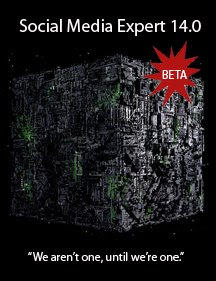
Last December, TNS Media Intelligence noted that total measured advertising expenditures in the first nine months of 2008 declined by 1.7 percent as compared to the same period in 2007. Since, spending has been dramatically cut, with television being especially hard hit. Network advertisers lost almost 10 percent of revenue in the fourth quarter 2008.
“Media ad spending, which began tiptoeing into negative territory in early 2007, has crossed an inflection point in the past six months as the economic downturn has become more widespread,” said Jon Swallen, SVP Research at TNS. “Preliminary data from the fourth quarter indicate a further slackening of the overall advertising market.”
A subsequent study, released this March by TNS, demonstrates such dramatic cuts are a mistake. Specifically, the study showed that when marketers cut spending during a downturn, they lose market share and brand awareness to private labels.
TNS covered eight U.S.-based household and personal-care marketers that cut measured media spending an average of 8.8 percent, which was higher than the 5 percent cut among advertisers overall. According to AdAge, U.S.-based household, personal-care and beauty marketers slashed spending 14 percent on average in the fourth quarter. The results are dramatic, but not surprising — companies that went with the flow of the boom-bust cycle and cut ad spending tended to lose more share to private labels both immediately and over the long term.
The Internet recession-proof myth.
Despite the study, some social media "experts" claim the recent advertising decline is merely a sign of the times, even going so far as to say that advertising is no longer needed. However, it's simply not true.
Recessionary cutbacks have had an impact across the board. As Simon Owens noted, spending on blogs, especially political blogs in an off-election year, is down.
"Everyone looks at the numbers and says, 'Wow, advertising is growing 20 percent a year online,' and they get really excited about that," Henry Copeland, the CEO of Blogads told Owens. "But most of that growth is cost-per-click — it's Google, it's AdWords, it's AdSense."
On the surface, other studies seem to indicate the opposite, citing that 63 percent of companies plan to increase their social media marketing budgets in 2009. However, the discretionary spending doesn't seem to be reaching content sites like Pajama Media, which closed its doors.
In addition to Google, Adwords, and Adsense as Copeland said, the investment seems to be made in direct-to-consumer presence on the Internet, hindered only by social media's continued challenge to prove itself as remotely measurable. (It's measurable.) However, that still leaves one piece of the puzzle missing.
If social media can supposedly supplant advertising as some suggest, then why would large marketers lose market share to private labels despite being among the earliest adopters of social media? In looking at several studies, it seems obvious that ad cutbacks are the common denominator, which means advertising is still a critical component to communication.
Isolated research creates erroneous conclusions.
Unless you look at the world with the lens of a single discipline, it seems very obvious how communication fits together. While each of the three disciplines — advertising, public relations, and social media — crossover into each other's area, each are particularly strong in specific areas.
• Advertising is best suited to establish awareness
• Public relations is best suited to establish position
• Social media is best suited to establish engagement
Naturally, all three can effectively establish awareness, position, and engagement, but it's generally more effective when all three work together. And, as illustrated by the March study, it doesn't change in a down economy. Companies that win are those that continue to communicate across several streams, with the right mix of which being largely situational.






















